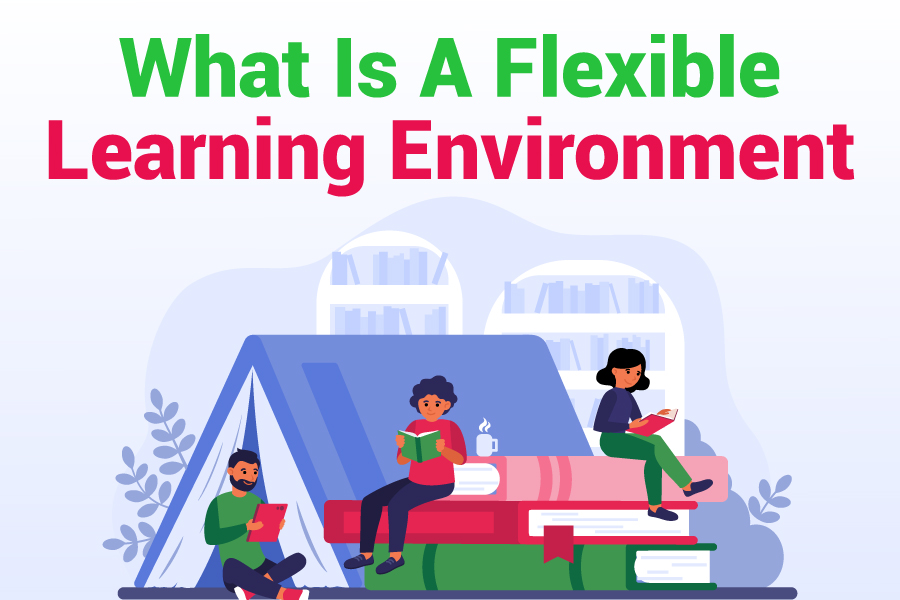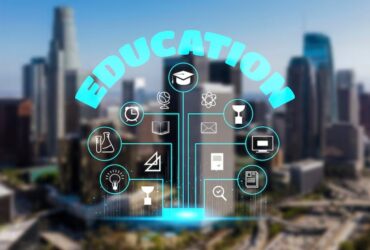In today’s rapidly evolving educational landscape, the traditional classroom setting is undergoing a transformation. As we strive to cater to diverse learning styles and prepare students for the dynamic challenges of the 21st century, the concept of a flexible learning environment has emerged as a powerful tool. Imagine an environment where students are not confined to rigid desks and chairs but rather have the freedom to move, collaborate, and engage in ways that suit their individual needs. This is the essence of a flexible learning environment, and it holds the potential to revolutionize the way we approach education.
A flexible learning environment is a dynamic and adaptable space that encourages active participation, fosters creativity, and promotes a sense of ownership among learners. It recognizes that each student is unique, with distinct learning preferences and strengths. By embracing this diversity, a flexible learning environment empowers students to take control of their learning journey, cultivating a sense of autonomy and engagement that transcends traditional classroom boundaries.
As an educator, I have witnessed firsthand the transformative impact of flexible learning environments on student motivation, critical thinking, and overall academic performance. By breaking free from the constraints of traditional classroom setups, we open the doors to a world of possibilities where learning becomes an immersive and personalized experience.
Advantages Of A Flexible Learning Environment
The advantages of embracing a flexible learning environment are multifaceted and far-reaching. By providing students with choices and autonomy, we cultivate an atmosphere that nurtures their intrinsic motivation and engagement. This approach acknowledges that each learner is unique, with distinct learning styles, interests, and paces. By offering a variety of learning spaces, resources, and modalities, we empower students to find the optimal conditions that resonate with their individual needs, ultimately leading to more effective learning outcomes.
Furthermore, flexible learning environments foster collaboration, communication, and critical thinking skills – essential competencies for success in the 21st century. By breaking down traditional barriers and encouraging interaction, students develop the ability to work effectively in teams, exchange ideas, and tackle complex problems from diverse perspectives.
Different Types Of Flexible Learning Environments
Flexible learning environments can take various forms, each tailored to specific educational contexts and goals. Some common examples include:
Blended Learning: Combining face-to-face instruction with online or digital components, allowing for personalized learning paths and increased flexibility.
Flipped Classrooms: Students engage with course materials independently before class, freeing up class time for interactive activities, discussions, and hands-on projects.
Flexible Seating Arrangements: Classrooms with modular furniture and varied seating options, enabling students to choose the environment that best suits their learning preferences.
Open Learning Spaces: Expansive, multi-purpose areas that promote collaboration, project-based learning, and cross-disciplinary exploration.
Virtual Learning Environments: Online platforms that facilitate remote learning, enabling students to access educational resources and engage with instructors and peers from anywhere.
Case Studies: Successful Implementation Of Flexible Learning Environments
To illustrate the transformative power of flexible learning environments, let us explore a few notable case studies:
- Montessori Schools: Renowned for their student-centered approach, Montessori schools have long embraced the principles of flexible learning environments. By providing carefully prepared environments and allowing students to move freely and choose their activities, these schools foster independence, self-discipline, and a love for learning.
- High Tech High: This network of charter schools in California has gained recognition for its innovative approach to education. Students engage in project-based learning, collaborating in open workspaces and utilizing technology to enhance their learning experiences.
- Stanford University’s Hasso Plattner Institute of Design (d.school): The d.school at Stanford is a hub for design thinking and innovation. Its flexible learning spaces encourage creativity, collaboration, and hands-on experimentation, preparing students to tackle complex real-world challenges.
How To Create A Flexible Learning Environment
Creating a flexible learning environment requires a holistic approach that considers physical, pedagogical, and technological elements. Here are some key steps to consider:
- Assess Learner Needs: Conduct surveys, focus groups, or observations to understand the diverse learning preferences, interests, and challenges of your students.
- Redesign Physical Spaces: Incorporate modular furniture, varied seating options, and collaborative workspaces to accommodate different learning activities and styles.
- Integrate Technology: Leverage digital tools, online platforms, and multimedia resources to facilitate personalized learning paths, virtual collaboration, and access to diverse educational materials.
- Adopt Learner-Centered Pedagogies: Implement teaching strategies that promote active learning, project-based activities, and student-driven inquiry, fostering ownership and engagement.
- Foster a Growth Mindset: Encourage a culture of continuous learning, risk-taking, and growth, where mistakes are viewed as opportunities for improvement.
- Provide Professional Development: Equip educators with the necessary skills, knowledge, and mindset to effectively facilitate flexible learning environments.
Tools And Technologies For A Flexible Learning Environment
To support the implementation of flexible learning environments, various tools and technologies can be leveraged:
Learning Management Systems (LMS): Platforms like Canvas, Blackboard, or Moodle facilitate online course delivery, content sharing, and virtual collaboration.
Video Conferencing Tools: Applications such as Zoom, Google Meet, or Microsoft Teams enable remote learning, virtual classroom sessions, and real-time interactions.
Collaborative Workspaces: Cloud-based tools like Google Workspace, Microsoft Office 365, or Notion allow for seamless collaboration, document sharing, and real-time co-editing.
Interactive Whiteboards: These digital whiteboards, like those from Promethean or SMART Technologies, enhance engagement and collaboration during in-person or virtual sessions.
Augmented Reality (AR) and Virtual Reality (VR): Immersive technologies like AR and VR offer unique opportunities for experiential learning, simulations, and virtual field trips.
Challenges And Solutions In Implementing A Flexible Learning Environment
While the benefits of flexible learning environments are compelling, their implementation can present challenges that require thoughtful solutions:
- Resistance to Change: Some educators and learners may initially resist the shift from traditional methods. Addressing concerns through open communication, training, and showcasing success stories can help overcome this resistance.
- Resource Constraints: Implementing flexible learning environments may require financial investments in infrastructure, technology, and professional development. Seeking grants, partnerships, or phased implementation approaches can mitigate resource constraints.
- Technology Barriers: Ensuring equitable access to technology and addressing digital literacy gaps are crucial for successful implementation. Providing technical support, training, and accommodations can help bridge these gaps.
- Assessment and Evaluation: Assessing student progress and evaluating the effectiveness of flexible learning environments may require adapting traditional assessment methods. Exploring alternative assessment strategies and data-driven decision-making can help address this challenge.
The Impact Of Flexible Learning Environments On Student Outcomes
Numerous studies have highlighted the positive impact of flexible learning environments on student outcomes, including:
Improved Academic Performance: By catering to diverse learning styles and fostering engagement, flexible learning environments have been shown to enhance academic achievement and retention of knowledge.
Increased Motivation and Engagement: The autonomy, choice, and personalization offered by flexible learning environments contribute to higher levels of motivation, engagement, and self-directed learning.
Development of 21st-Century Skills: Collaborative problem-solving, critical thinking, communication, and technological proficiency are nurtured in flexible learning environments, preparing students for future success.
Enhanced Well-being and Satisfaction: The student-centered approach and supportive learning atmosphere of flexible environments can positively impact students’ overall well-being, confidence, and satisfaction with their educational experience.
Best Practices For Designing And Maintaining A Flexible Learning Environment
To ensure the successful implementation and sustainability of a flexible learning environment, adhering to best practices is essential:
- Continuous Evaluation and Improvement: Regularly assess the effectiveness of the learning environment through student feedback, data analysis, and ongoing adjustments to meet evolving needs.
- Collaboration and Professional Learning Communities: Foster a culture of collaboration among educators, encouraging the sharing of best practices, resources, and continuous professional development.
- Embracing Diversity and Inclusivity: Design learning environments that are accessible, inclusive, and responsive to the diverse backgrounds, abilities, and learning preferences of all students.
- Fostering Student Agency and Ownership: Empower students to take an active role in shaping their learning experiences, providing opportunities for choice, self-reflection, and goal-setting.
- Leveraging Community Resources: Establish partnerships with local organizations, businesses, and experts to enhance learning opportunities and provide real-world connections.
- Continuous Technology Integration: Stay up-to-date with emerging technologies and their potential applications in flexible learning environments, ensuring seamless integration and effective utilization.
Conclusion
As we navigate the rapidly changing educational landscape, embracing flexible learning environments is not merely an option but a necessity. By acknowledging the diverse needs and preferences of learners, we unlock their full potential and equip them with the skills and mindset to thrive in an ever-evolving world.
Flexible learning environments foster creativity, collaboration, and critical thinking, preparing students for the challenges and opportunities of the 21st century. By providing choices, autonomy, and personalized learning experiences, we cultivate a love for lifelong learning and empower students to become active agents in their educational journeys.
As educators and lifelong learners ourselves, it is our responsibility to continuously evaluate, adapt, and innovate, ensuring that our learning environments remain relevant, engaging, and responsive to the needs of our diverse student populations. Are you ready to unlock the potential of your students and embark on the journey towards a more flexible and dynamic learning environment? Join our upcoming webinar, “Reimagining Education: Strategies for Creating Flexible Learning Spaces,” where experts will share insights, best practices, and practical tips for transforming your educational setting. Register now and take the first step towards empowering your learners with the tools and environments they need to thrive. Don’t miss this opportunity to be at the forefront of educational innovation!












































Leave a Reply